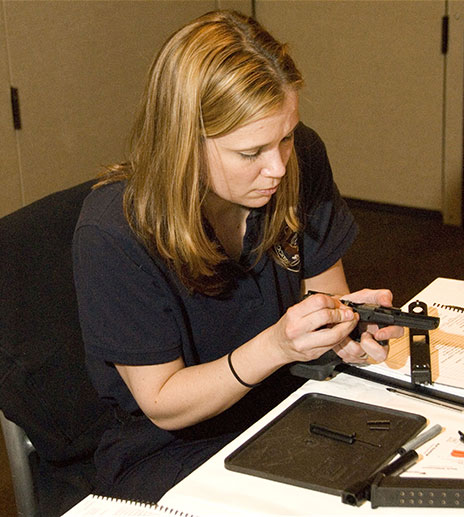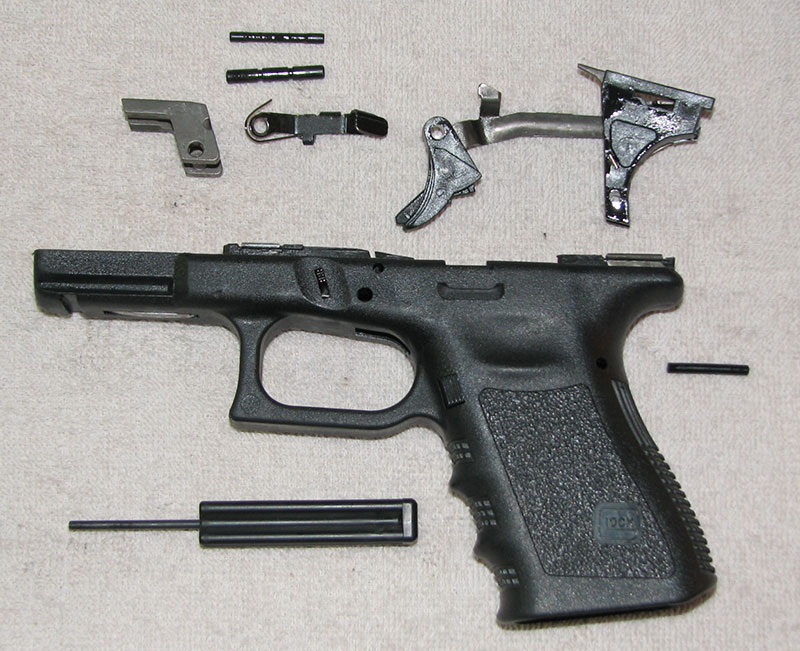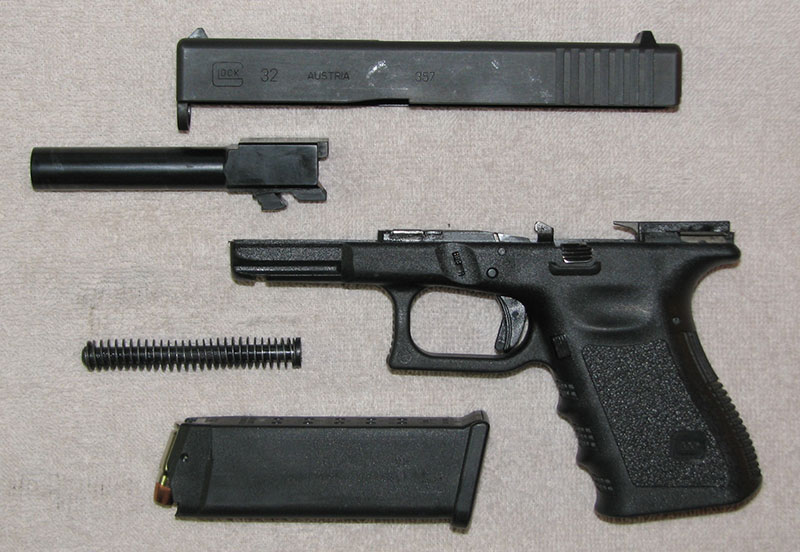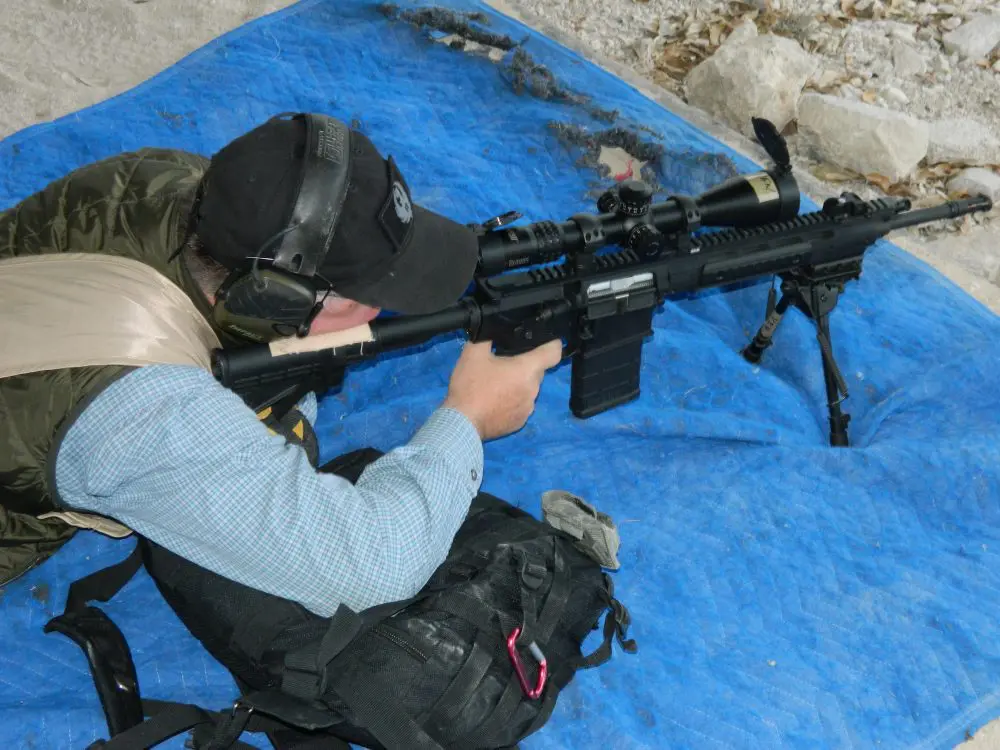
Attending an armorer’s course is one of the “best practices” when considering any change in duty weapon. At least one member of the weapon selection/approval committee should attend training for the pistol that the department is serious about purchasing.
A hands-on armorer’s course allows the officer to cut through the sales hype or myth and fully understand the true functions and capabilities of the pistol. Armorer training also gives the department at least one officer who knows the correct terms for the various parts of the gun. It will also help in troubleshooting problems on the range. That person will also be able to accurately describe stoppages. Since armorer’s courses are completely hands-on, the classes are usually limited to about 30 people.
The Glock Armorer’s Course I attended was taught by Major (Ret.) Erich Clark, one of nine such firearms instructors with Glock Professional, the training arm of Glock, Inc. Glock conducts about 1,000 such armorer certification courses per year, but the classes are still booked over six months in advance.
Table of Contents
WHOSE FAULT IS IT?
The armorer’s course drove home the point that the shooter is at fault in 90% of the problems. The ammo is at fault in 9% of the problems. Maintenance and cleaning are at fault in 0.9% of the problems.
That leaves 0.1% of the time for true weapon issues like broken or worn parts. The department’s armorer needs to know this ratio before a lot of guns are incorrectly returned to the manufacturer.
The Armorer’s Course covers both the Gen3 and Gen4 versions of the Standard, Compact, and Subcompact law enforcement pistols. The course also covers the three Subcompact Slimline pistols. In every area where the Glock 42 (.380 ACP) and Glock 43 (9mm) are different from the larger pistols, a special distinction was made.
The Tactical/Practical pistols were not covered, nor were the Long Slide competition guns. However, the Glock 17T Training guns in both Gen3 and Gen4 were covered in detail.
Both Gen3 and Gen4 pistols are currently in production and will be for the foreseeable future. Student armorers were paired up for the entire eight-hour course. One had a Gen3 pistol, while the other had a Gen4 pistol. This made it extremely easy to compare and contrast the pistols. The parts themselves may be slightly different, but the names of the parts are the same between Gen3 and Gen4.
GEN3 AND GEN4

The course started with the differences between the Gen3 and Gen4 guns. The Gen4 dual recoil spring has twice the spring life. It should be replaced at 5,000 rounds. The dual recoil spring also slows down the slide velocity, which produces less felt recoil in the .40-caliber pistols.
The single recoil spring assembly lasts 2,500 rounds but should be upgraded to the “-1” assembly regardless. The “-1” recoil spring uses a stiffer, more heat-resistant fiberglass-reinforced polymer, originally designed for the select-fire Glock 18.
Gen4 guns have the SF (short frame) lower receiver that allows the use of adjustable backstraps. Gen4 guns come from the factory in the shortest mode. The other backstraps are just one polymer push-pin away.
Gen4 guns also have a reversible (not ambidextrous) magazine catch. If the mag catch is reversed, the pistol must use the Gen4 mags with the cutouts. That means an officer with a Gen4 gun will not be able to use magazines from a fellow officer with a Gen3 gun and magazines.
Most left-handed shooters get along fine with the left-side mag catch. Best practice is to leave it there unless training simply cannot resolve mag-change issues for lefties.
Since its introduction in 1986, the Glock Armorer’s Kit has consisted of a single 3/32-inch steel punch. One comes in the frame of every Gen4 duty pistol. The Glock pistol can be completely disassembled down to all the individual parts using just the handheld punch. No tapping or hammering is required.
DISASSEMBLY

Everyone with a Glock pistol should know the takedown process starts with making the gun safe by removing the magazine, clearing the chamber, double checking, then pulling the trigger and lowering the slide lock.
Pulling the trigger disengages the engagement between the firing pin lug and the cruciform at the rear of the trigger bar. With the slide off, the recoil spring and rod assembly can be removed and the barrel removed.
Routine cleaning and care began with where not to oil—the mag tube and firing-pin channel. One drop, and one drop only, of oil goes on the barrel hood, connector bar, guide rails in slide, slide rails on frame, and cam surface under the slide near the firing-pin lug.
Only certified Glock armorers are permitted to disassemble the pistol beyond this field-stripped condition.
Gen3 guns should be inspected by a certified armorer every 2,500 rounds or 12 months, whichever comes first. Gen4 guns should be inspected every 5,000 rounds or 12 months.
Removing the locking-block pin, trigger-housing pin and trigger pin allows all the frame components and assemblies to be removed. A lot of time was spent during the course on the coil trigger spring, the various “New York” trigger springs, and the different connector designs.
The push-pins on the Glock should be removed in a very specific order, and likewise replaced in a specific order. The rule with Glock is, metal pins hold metal parts; polymer pins hold polymer parts.
A number of troubleshooting and diagnostic checks were performed, including simulated broken parts and incorrectly reassembled parts. An armorer’s cutaway slide allowed a visual inspection of the firing-pin lug to trigger bar engagement.
Part of the practical, hands-on portion of the armorer’s course was the traditional fully disassemble-fully assemble drill: five times all the way down to the tiny firing-pin spring cups and all the way up to the function checks—in less than 15 minutes. To become certified, each armorer had to pass a timed written test and do a full disassembly and reassembly in front of the instructor.
Every department should send at least one officer to a factory armorer’s course.
Lieutenant Ed Sanow is the director of training with the Benton County, Indiana Sheriff’s Department and co-author of three ammo stopping power books. He may be reached at [email protected].
SOURCE
GLOCK PROFESSIONAL, INC.
(770) 432-1202
www.glocktraining.com





